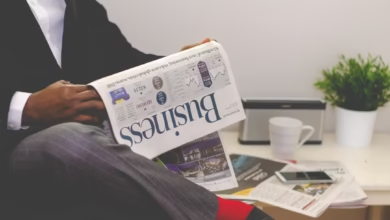Inflation Unveiled: Understanding Its Impact on Purchasing Power, Interest Rates, and Investment Strategies

Inflation is a powerful economic force that can significantly influence the financial landscape, affecting everything from everyday consumer spending to the stability of investment portfolios. As prices rise, the purchasing power of consumers diminishes, prompting shifts in spending habits and financial decision-making. This article delves into the multifaceted impacts of inflation, beginning with its effects on consumer purchasing power and how it reshapes spending behaviors. We will explore the intricate relationship between inflation and interest rates, illuminating how these two elements interact to affect economic stability.
Moreover, we will provide strategies for safeguarding your portfolio against the erosive effects of inflation, ensuring that your wealth retains its value over time. The discussion will also cover how different asset classes respond to inflationary pressures, highlighting historical examples of hyperinflation and the lessons learned from these crises. Finally, we will examine the role of central banks in combating inflation through monetary policy and how supply chain disruptions can exacerbate inflationary trends, ultimately influencing wages and employment. Join us as we unravel the complexities of inflation and its broad implications for consumers and investors alike.
- 1. **Understanding Inflation: Its Effects on Consumer Purchasing Power and Spending Habits**
- 2. **Navigating Interest Rates: The Intricate Dance Between Inflation and Economic Stability**
1. **Understanding Inflation: Its Effects on Consumer Purchasing Power and Spending Habits**
Inflation is the rate at which the general level of prices for goods and services rises, eroding purchasing power—the amount of goods or services that can be bought with a unit of currency. As inflation increases, consumers find that their money does not stretch as far as it once did; the same dollar buys fewer goods and services, leading to a decline in real income. This phenomenon can significantly alter consumer behavior and spending habits.
When inflation is persistent, consumers may adjust their spending patterns. For instance, they might prioritize essential items over discretionary spending, such as luxury goods or non-essential services. This shift can lead to decreased demand for certain products, impacting businesses and potentially leading to economic slowdowns. Additionally, consumers may begin to purchase items in bulk or seek out alternatives, such as generic brands, to mitigate rising costs.
Moreover, inflation can lead to increased uncertainty about future prices, prompting consumers to change their purchasing strategies. Anticipating further price increases, individuals may accelerate their purchases to lock in current prices, contributing to a temporary surge in demand. Conversely, if inflation is perceived as uncontrollable, consumers may adopt a more cautious approach, saving rather than spending, which could further dampen economic growth.
Understanding inflation's effects on purchasing power is crucial for both consumers and policymakers. It highlights the importance of maintaining price stability to foster a favorable economic environment where individuals can plan their finances and businesses can thrive.
Inflation significantly affects consumer purchasing power, as it leads to a rise in the general price level of goods and services. When inflation occurs, each unit of currency buys fewer goods and services, effectively reducing the real value of money. For consumers, this means that their disposable income stretches less far, impacting their ability to afford everyday necessities and discretionary spending. As prices increase, individuals may need to adjust their budgets, prioritize essential purchases, or seek alternatives, such as lower-cost substitutes or second-hand items.
In relation to inflation, interest rates typically follow a complex relationship. Central banks often adjust interest rates to manage inflationary pressures; when inflation rises, they may increase rates to cool down spending and borrowing. Conversely, lower interest rates can stimulate economic activity but may also contribute to higher inflation if demand outstrips supply. This interplay highlights the importance of interest rates not only in influencing consumer behavior but also in shaping broader economic conditions.
To protect portfolios from inflation, investors can adopt several strategies. Diversifying investments across various asset classes—such as real estate, commodities, and inflation-protected securities—can provide a hedge against rising prices. Additionally, equities tend to outperform other asset classes during inflationary periods, as companies often pass increased costs onto consumers. Investors may also consider inflation-linked bonds, which adjust principal and interest payments based on inflation rates, thus preserving purchasing power.
Different asset classes respond uniquely to inflation. Real assets like real estate and commodities often appreciate during inflationary periods, while fixed-income investments, such as traditional bonds, may suffer due to eroding purchasing power. Equities can provide a mixed performance, depending on the sector's ability to manage costs and maintain profit margins. Understanding these dynamics is essential for investors aiming to navigate inflationary environments.
Historical instances of hyperinflation—such as those experienced in Germany during the Weimar Republic and Zimbabwe in the late 2000s—offer critical lessons about the consequences of unchecked inflation. These episodes often resulted from a combination of excessive money printing, loss of confidence in the currency, and severe supply chain disruptions. They illustrate the importance of sound monetary policy and the need for governments to maintain fiscal discipline to prevent inflation from spiraling out of control.
Central banks play a crucial role in combating inflation through monetary policy tools, such as adjusting interest rates, conducting open market operations, and using forward guidance. By influencing the money supply and overall economic activity, central banks aim to stabilize prices and maintain consumer confidence. Their actions can significantly impact inflation expectations, which in turn shape consumer behavior and investment decisions.
Supply chain disruptions have become increasingly recognized as a key driver of inflation, particularly in recent years. Factors such as global pandemics, geopolitical tensions, and natural disasters can lead to delays in production and distribution, resulting in shortages and increased costs. These disruptions not only affect the availability of goods but also contribute to rising prices, further challenging consumers and businesses alike.
Finally, inflation's impact on wages and employment is multifaceted. While rising prices can erode real wages, leading to decreased purchasing power for workers, inflation can also prompt employers to adjust compensation to attract and retain talent. This dynamic can create a complex feedback loop where higher wages may contribute to further inflation if businesses pass on increased labor costs to consumers. Understanding these interactions is vital for policymakers and stakeholders as they navigate the challenges posed by inflation in the economy.
2. **Navigating Interest Rates: The Intricate Dance Between Inflation and Economic Stability**
Interest rates and inflation have a complex, interdependent relationship that significantly influences economic stability. When inflation rises, central banks often respond by increasing interest rates to cool down the economy. Higher interest rates make borrowing more expensive, which can slow consumer spending and business investments. This, in turn, can help decrease demand, ultimately stabilizing prices.
Conversely, when inflation is low, central banks may lower interest rates to encourage borrowing and stimulate economic growth. This reduction in rates can lead to increased consumer spending and investment, potentially driving up demand and, in some cases, contributing to higher inflation.
The timing and magnitude of these adjustments are critical. Rapid increases in interest rates can lead to economic contraction, while too slow a response can allow inflation to spiral out of control. The balance is delicate; central banks must carefully monitor economic indicators, including inflation rates, employment figures, and overall economic growth, to navigate this intricate dance.
In recent years, central banks have faced challenges related to this dynamic, especially during periods of unexpected inflation spikes. For example, the COVID-19 pandemic disrupted supply chains and altered consumer behaviors, leading to inflationary pressures that were not anticipated. In such scenarios, central banks are often tasked with not only managing inflation but also supporting economic recovery, making their role increasingly complex.
Ultimately, understanding the relationship between inflation and interest rates is crucial for consumers and investors alike. It informs decisions about spending, saving, and investment strategies, highlighting the importance of being vigilant in times of economic uncertainty.
In conclusion, inflation is a multifaceted economic phenomenon that significantly impacts consumer purchasing power, shaping spending habits and influencing overall economic stability. As we have explored, rising prices often lead to diminished purchasing power, forcing consumers to make difficult financial decisions. The relationship between inflation and interest rates underscores the delicate balance that central banks must maintain to foster economic growth while keeping inflation in check.
To protect investment portfolios against the erosion of value caused by inflation, various strategies can be employed, including diversifying into asset classes that historically perform well during inflationary periods. Learning from historical instances of hyperinflation reveals critical lessons about the importance of sound monetary policies and the need for proactive measures to safeguard economic integrity.
Moreover, the ongoing challenges posed by supply chain disruptions highlight how interconnected global economies can exacerbate inflationary pressures. This, in turn, has implications for wages and employment, as businesses navigate increased costs and changing consumer demands.
As consumers and investors alike adapt to these economic realities, staying informed and strategically responsive is crucial. By understanding the dynamics of inflation and its broader implications, individuals can better position themselves to weather the storm and capitalize on opportunities that arise in an ever-evolving financial landscape.





